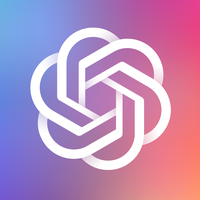The Rise of AI Art: Exploring GPT-4o and Its Impact on Creativity
April 23, 2025, 12:05 am

Location: United States, California, San Francisco
Employees: 201-500
Founded date: 2015
Total raised: $518.21B
In the world of art, a new brush has emerged. It’s digital, it’s intelligent, and it’s changing the way we create. Enter GPT-4o, OpenAI’s latest marvel. This tool is not just an upgrade; it’s a revolution. With its ability to generate images that echo the enchanting style of Studio Ghibli, GPT-4o is sparking a wildfire of creativity across the globe. But with great power comes great responsibility. As we embrace this technology, we must also navigate the murky waters of ethics and authenticity.
Imagine a canvas where your words paint vivid landscapes. GPT-4o does just that. It combines text and image generation in a seamless dance. Users can describe a scene, and in moments, a stunning visual materializes. This is not mere automation; it’s a collaboration between human imagination and machine intelligence.
The allure of Ghibli-style art is undeniable. Studio Ghibli has enchanted audiences with its soft color palettes and whimsical narratives. Its visuals evoke nostalgia, transporting viewers to dreamlike worlds. With GPT-4o, anyone can tap into this magic. The tool captures the essence of Ghibli’s aesthetic—gentle hues, intricate details, and a deep connection to nature. It’s like having a master artist at your fingertips.
To create Ghibli-style art with GPT-4o, users simply need to follow a few steps. First, access the platform. Then, upload an image or provide a detailed prompt. The more specific the description, the better the output. Users can refine their requests, adjusting colors or adding elements until the image aligns with their vision. It’s a process that encourages exploration and iteration.
But while the technology is impressive, it’s not without its challenges. Users have reported occasional glitches and limitations, especially on the free tier. The promise of creativity can sometimes be stifled by technical hiccups. Moreover, the ethical implications of AI-generated art loom large. As artists embrace these tools, questions arise about originality and copyright. Can a machine truly replicate the soul of human creativity?
The debate intensifies when considering the voices of original artists. Many, including those from Studio Ghibli, express concern over AI’s encroachment on their craft. They argue that replicating distinct styles may infringe on the rights of creators. OpenAI has taken steps to address these concerns, implementing restrictions on prompts that mimic living artists. However, the line between inspiration and imitation remains blurred.
Despite these challenges, the potential of GPT-4o is vast. It opens doors for artists, designers, and marketers alike. The tool’s precision in text rendering and ability to manage complex scenes makes it invaluable for various applications. From creating marketing materials to designing intricate game worlds, GPT-4o is a versatile ally.
In a side-by-side comparison with Google’s Gemini 2.0, GPT-4o stands out for its user-friendly approach. While Gemini often surprises users with unexpected artistic outcomes, GPT-4o excels in delivering precise, tailored results. This makes it particularly appealing for those who require specific visual elements or text integration.
Accessibility is another key advantage. GPT-4o is available to a wide audience, including free users. This democratization of art creation is revolutionary. It allows budding artists to experiment without the barrier of high costs. Platforms like CometAPI further enhance this accessibility, offering integrated tools for image generation at competitive prices.
As we navigate this new landscape, it’s crucial to embrace best practices for ethical AI art creation. Artists should avoid direct replication of existing works and focus on personal enjoyment rather than commercialization. Acknowledging the influence of original creators fosters a culture of respect and innovation.
The future of AI-generated art is bright, yet it requires careful stewardship. As we harness the power of tools like GPT-4o, we must remain vigilant about the implications of our creations. The magic of art lies in its ability to inspire and connect. By using AI responsibly, we can ensure that this magic continues to flourish.
In conclusion, GPT-4o is more than just a tool; it’s a gateway to new realms of creativity. It invites us to explore, to dream, and to create. As we stand on the brink of this artistic revolution, let us embrace the possibilities while honoring the legacy of those who came before us. The canvas is vast, and the colors are vibrant. What will you create?
Imagine a canvas where your words paint vivid landscapes. GPT-4o does just that. It combines text and image generation in a seamless dance. Users can describe a scene, and in moments, a stunning visual materializes. This is not mere automation; it’s a collaboration between human imagination and machine intelligence.
The allure of Ghibli-style art is undeniable. Studio Ghibli has enchanted audiences with its soft color palettes and whimsical narratives. Its visuals evoke nostalgia, transporting viewers to dreamlike worlds. With GPT-4o, anyone can tap into this magic. The tool captures the essence of Ghibli’s aesthetic—gentle hues, intricate details, and a deep connection to nature. It’s like having a master artist at your fingertips.
To create Ghibli-style art with GPT-4o, users simply need to follow a few steps. First, access the platform. Then, upload an image or provide a detailed prompt. The more specific the description, the better the output. Users can refine their requests, adjusting colors or adding elements until the image aligns with their vision. It’s a process that encourages exploration and iteration.
But while the technology is impressive, it’s not without its challenges. Users have reported occasional glitches and limitations, especially on the free tier. The promise of creativity can sometimes be stifled by technical hiccups. Moreover, the ethical implications of AI-generated art loom large. As artists embrace these tools, questions arise about originality and copyright. Can a machine truly replicate the soul of human creativity?
The debate intensifies when considering the voices of original artists. Many, including those from Studio Ghibli, express concern over AI’s encroachment on their craft. They argue that replicating distinct styles may infringe on the rights of creators. OpenAI has taken steps to address these concerns, implementing restrictions on prompts that mimic living artists. However, the line between inspiration and imitation remains blurred.
Despite these challenges, the potential of GPT-4o is vast. It opens doors for artists, designers, and marketers alike. The tool’s precision in text rendering and ability to manage complex scenes makes it invaluable for various applications. From creating marketing materials to designing intricate game worlds, GPT-4o is a versatile ally.
In a side-by-side comparison with Google’s Gemini 2.0, GPT-4o stands out for its user-friendly approach. While Gemini often surprises users with unexpected artistic outcomes, GPT-4o excels in delivering precise, tailored results. This makes it particularly appealing for those who require specific visual elements or text integration.
Accessibility is another key advantage. GPT-4o is available to a wide audience, including free users. This democratization of art creation is revolutionary. It allows budding artists to experiment without the barrier of high costs. Platforms like CometAPI further enhance this accessibility, offering integrated tools for image generation at competitive prices.
As we navigate this new landscape, it’s crucial to embrace best practices for ethical AI art creation. Artists should avoid direct replication of existing works and focus on personal enjoyment rather than commercialization. Acknowledging the influence of original creators fosters a culture of respect and innovation.
The future of AI-generated art is bright, yet it requires careful stewardship. As we harness the power of tools like GPT-4o, we must remain vigilant about the implications of our creations. The magic of art lies in its ability to inspire and connect. By using AI responsibly, we can ensure that this magic continues to flourish.
In conclusion, GPT-4o is more than just a tool; it’s a gateway to new realms of creativity. It invites us to explore, to dream, and to create. As we stand on the brink of this artistic revolution, let us embrace the possibilities while honoring the legacy of those who came before us. The canvas is vast, and the colors are vibrant. What will you create?
